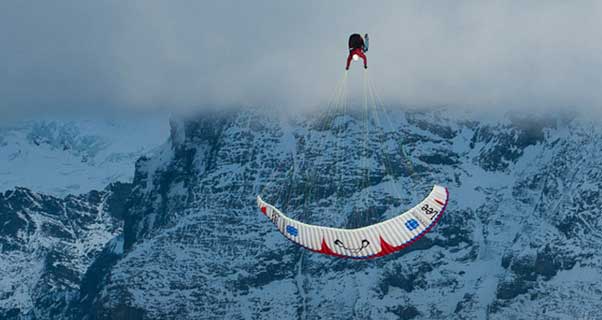Above is Judith Zweifel performing
the advanced maneuver called infinite tumbles.
Unlike other common airfoils the shape of the canopy can be
changed mid flight, opening up a whole world of aerodynamic
potential.

Lift can be explained by a phenomenon best known as
Bernoulli's Principle.
Velocity of the air moving around the airfoil is
inversely related to the pressure on the foil.
Another way to think of it is water in a pipe. As the
diameter of the pipe decreases (pressure), the velocity
increases.
In the example above, the pressure is greater under the foil
since the air is moving less quickly than the air above the
foil. This combination of forces is called lift.
When lift forces overcome the drag forces and downward force
of gravity, we have flight!
(http://www.aviation-history.com/theory/force.htm)
Bernoulli's Principle can be described by the equation
below:
 ©
HyperPhysics 2014
©
HyperPhysics 2014
 © Eagle
Paragliding 2012
© Eagle
Paragliding 2012
Each wing has a optimum angle of attack that it is
manufactured to fly at. Minimum sink is the point where the
glider is descending at the lowest rate possible.
 © Paul
Amiell
© Paul
Amiell
Paragliders are able to stay aloft for long periods of
time by flying in areas of lift. Two sources of lift are thermal
lift and lift from wind hitting a steep cliff.
Thermal lift is caused by warm air rising off ground or water
heated by the sun.


DrJack.info
Wikipedia Common








